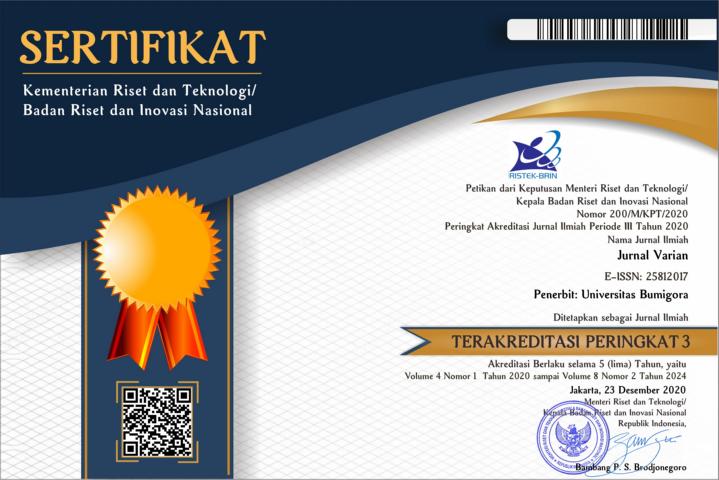Mortality Projection on Indonesia's Abridged Life Table to Determine the EPV of Term Annuity
Abstract
The life insurance industries usually use the Life Table for the valuation process, especially in calculating premiums and policy values of a policy. However, the Life Table is rarely updated; and it may even take years before they are updated. This happens because the insurers believe that the information in the Life Table is still related to the current state of a country and for the next several years. In fact, data and information related to mortality rates in a country are constantly changing and always being updated annually. Therefore, as an approach, researchers use the projection of mortality to approach the mortality rate in the future. Thus, future mortality data can be predicted so that better policies can be made by the governments or insurance industries. In this study, the Abridged Life Table of Indonesia is used in the projection of mortality for both sexes (male and female) of the population in Indonesia. The results of mortality projection are then used to calculate the Expected Present Value (EPV) of a term annuity-due under uniform distribution of deaths (UDD) for several values of and ages. The results obtained show that there is a decrease in the value of the mortality rate in the next few years. Therefore, it can be assumed that there is a possibility for longevity risk to occur in the future.
References
Bacinello, A. R., Chen, A., Sehner, T., & Millossovich, P. (2021). On the market-consistent valuation of participating life insurance heterogeneous contracts under longevity risk. Risks, 9(1), 1–18. https://doi.org/10.3390/risks9010020
Burch, T. K. (2018). Model-Based Demography. In Demographic Research Monographs (Vol. 9, Issue 429). http://link.springer.com/10.1007/978-3-319-65433-1
Chang, Y., & Sherris, M. (2018). Longevity risk management and the development of a value-based longevity index. Risks, 6(1). https://doi.org/10.3390/risks6010010
Coloma, G., & Date, M. C. (2020). HUMAN MORTALITY EFFECTS OF ECONOMIC of Austrian population based on 1960-2017 data. May.
Diaz, G., Debón, A., & Giner-Bosch, V. (2018). Mortality forecasting in Colombia from abridged life tables by sex. Genus, 74(1). https://doi.org/10.1186/s41118-018-0038-6
Dickson, D., Hardy, M., & Waters, H. (2009). Actuarial Mathematics for Life Contingent Risk. Cambridge University Press.
Dmitriev, Y. G., Gubina, O. V, & Koshkin, G. M. (2019). Applied Methods of Statistical Analysis. Statistical Computation and Simulation. Proceedings of the International Workshop, September, 195.
Ibrahim, R. I., & Siri, Z. (2011). Methods of expanding an abridged life tables: Comparison between two methods. Sains Malaysiana, 40(12), 1449–1453.
Janssen, F. (2018). Advances in mortality forecasting: introduction. Genus, 74(1). https://doi.org/10.1186/s41118-018-0045-7
Koshkin, G. M., & Gubina, O. V. (2016). Estimation of the present values of life annuities for the different actuarial models. Proceedings - 2nd International Symposium on Stochastic Models in Reliability Engineering, Life Science, and Operations Management, SMRLO 2016, 506–510. https://doi.org/10.1109/SMRLO.2016.89
Li, J. S. H., Zhou, R., & Hardy, M. (2015). A step-by-step guide to building two-population stochastic mortality models. Insurance: Mathematics and Economics, 63, 121–134. https://doi.org/10.1016/j.insmatheco.2015.03.021
Pavlov, V., & Mihova, V. (2018). An application of survival model in insurance. AIP Conference Proceedings, 2025(October). https://doi.org/10.1063/1.5064883
Zhu, X., Hardy, M., & Saunders, D. (2018). Valuation of an early exercise defined benefit underpin hybrid pension. Scandinavian Actuarial Journal, 2018(9), 823–844. https://doi.org/10.1080/03461238.2018.1463556

This work is licensed under a Creative Commons Attribution 4.0 International License.


















